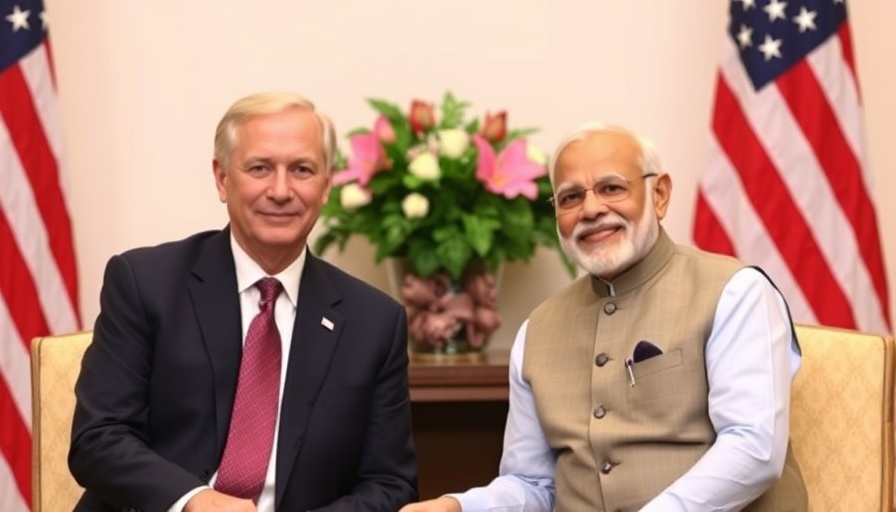
Strengthening Ties: The Importance of the U.S.-India 2+2 Intersessional Dialogue
The U.S.-India 2+2 Intersessional Dialogue is not just a meeting; it’s a moment that encapsulates deeper strategic alignments between two of the world's largest democracies. This recent event highlighted discussions on critical areas, including defense cooperation, cybersecurity, and counter-terrorism.
Historical Context: Tracing U.S.-India Relations
The relationships between the United States and India date back to the early days of independence for India in 1947. Yet, meaningful strategic cooperation really took off post the Cold War. The 2005 Indo-U.S. civilian nuclear agreement marked a turning point, enabling extensive military and economic collaboration. Today, in an increasingly multipolar world, this partnership calls for vigilance and coordination across various sectors, illustrating a shared commitment to combating global threats.
A Closer Look: The Key Themes of the Dialogue
During this latest 2+2 Meeting, officials focused on several pressing topics. The discussions centered on enhancing defense capabilities against regional threats, improving cybersecurity protocols to safeguard both nations from growing cyber attacks, and reinforcing counter-terrorism efforts in response to evolving global challenges. Each of these facets speaks to the further commitment both nations have to fostering peace and stability both regionally and globally.
Future Predictions: What Lies Ahead for U.S.-India Relations?
Looking ahead, the trajectory of U.S.-India relations seems poised for further deepening. With ongoing tensions in South Asia, particularly regarding China’s assertiveness, both nations will likely pivot towards developing stronger military collaborations. Furthermore, the technological cooperation in artificial intelligence and renewable energy will pave the way for innovative solutions addressing climate change. As both countries strive to be pathfinders for other democracies, the implications of this partnership will reverberate globally.
Counterarguments: Diverse Perspectives on U.S.-India Dynamics
While the strategic partnership is gaining momentum, some skeptics raise concerns regarding India’s historical non-alignment stance and its implications for U.S. interests. A critical examination reveals that India’s diplomatic approach still seeks a delicate balance, which may not always align with U.S. foreign policy objectives. Thus, ensuring transparency and mutual understanding remains paramount.
Relevance to Current Events: The Bigger Picture
In the context of current international relations, the U.S.-India 2+2 Intersessional Dialogue resonates strongly against global issues such as climate change, terrorism, and economic disparities. With soaring inflation rates in America and substantial immigration reform debates, this partnership is integral to addressing these multifaceted challenges. As both countries navigate these pressing matters, their collaboration can stimulate economic growth and enhanced security.
Actionable Insights: Navigating the Information Landscape
For citizens interested in the political dynamics between the U.S. and India, staying informed on these dialogues provides an understanding of how political news affects national and global security policies. Engaging in discussions or communities that focus on international relations can also widen one’s perspective, fostering a more informed electorate capable of holding its leaders accountable for how they navigate foreign policy priorities.
The U.S.-India relationship is more than just diplomatic courtesy; it is a strategic partnership with real implications for global peace and security. As developments unfold, it is crucial for citizens to stay informed and engaged.
 Add Element
Add Element  Add Row
Add Row 



Write A Comment